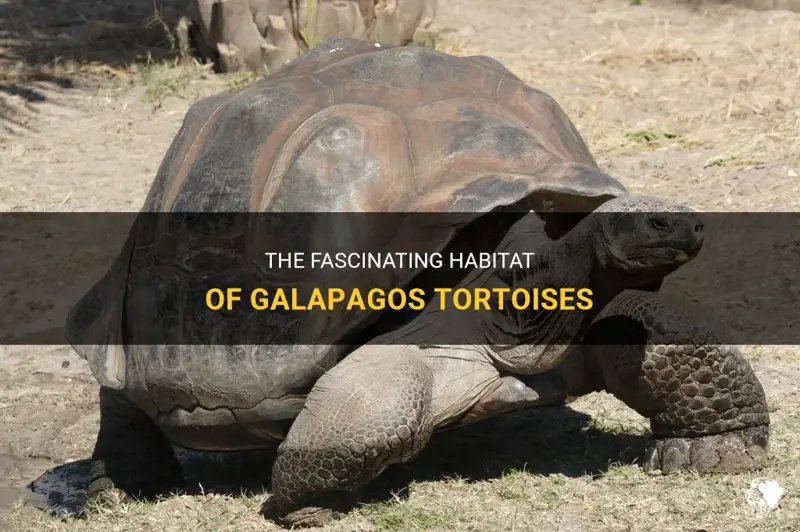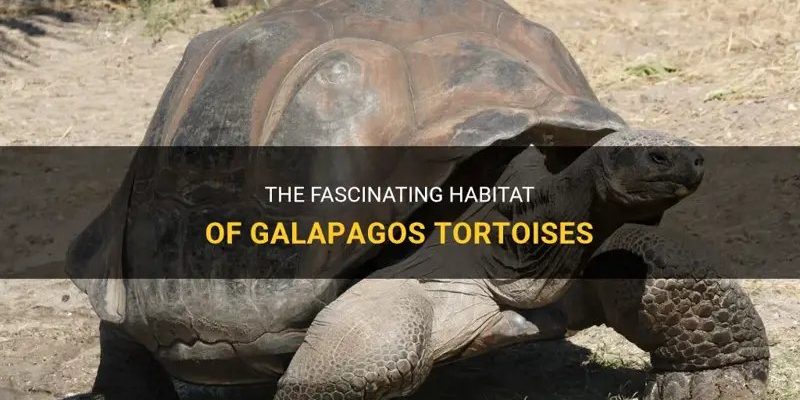
The Galápagos Islands, located about 600 miles off the coast of Ecuador, are the only place on Earth where these tortoises thrive in the wild. They have become iconic due to their size and unique adaptations to the islands’ varied environments. But what exactly makes up their habitat? And how do they manage to survive in such a remote location? Let’s take a closer look.
Overview of the Galápagos Islands
The Galápagos Islands are a stunning archipelago made up of 13 major islands and numerous smaller islets and rocks. Each island offers a variety of environments, from arid zones to lush highlands. Imagine diverse landscapes where each area feels distinct, yet all contribute to a fascinating ecosystem. The islands were formed by volcanic activity, giving rise to a unique geology that shapes the habitats found there.
The climate on the islands is typically warm, with a dry season and a wet season, which influences the vegetation and the types of habitats available. This mix of climate and geology means that the tortoises have different environments to choose from. Each island has its own character, which affects how the tortoises adapt and thrive.
Intriguingly, there are different subspecies of Galápagos tortoises based on which island they call home. Just as a city has its neighborhoods, each island has unique traits that influence the tortoises living there.
Tortoise Habitats Across the Islands
Galápagos tortoises primarily inhabit the different islands, but their preferred habitats can vary significantly. Some thrive in the dry, scrubby lowlands, while others are found in the lush highlands. The tortoises have adapted to these distinct environments, showcasing their resilience.
In the lowland areas, the terrain is often dry and covered with cacti and brush. Here, tortoises feast on low-lying plants and shrubs, which provide essential hydration and nutrients. You might picture them ambling slowly, munching on the vegetation like it’s a buffet designed just for them.
On the other hand, the highlands offer a different experience. These areas are more humid and filled with lush vegetation, making them perfect for tortoises that prefer a bit more moisture. The highlands can also provide better shelter from the sun and intense heat, giving the tortoises a cool refuge.
The Role of Altitude in Tortoise Distribution
Altitude plays a significant part in where Galápagos tortoises live. The islands’ varying elevation creates distinct microclimates, which can influence the types of flora available and, in turn, the tortoises’ diet.
Typically, as you climb higher on an island, the environment transitions from shrubland in the lowlands to lush forests at higher elevations. Tortoises that inhabit the highlands are often found in areas rich in grasses and herbs, offering a nutritious diet. Conversely, those in the lower areas depend more on drought-resistant plants.
Interestingly, some tortoises can migrate between these zones, adapting their diet and behavior according to the season. This flexibility helps them survive changes in weather patterns and food availability. It’s almost like they’re following the best weather forecast, but with their instincts guiding them instead.
Threats to Their Habitat
While Galápagos tortoises are remarkable survivors, their habitats face numerous threats. Invasive species like goats and pigs have caused significant damage to the vegetation that tortoises rely on for food. These animals can consume large amounts of plants, reducing the available resources for the tortoises.
Additionally, climate change poses serious risks to their habitats. Changes in temperature and precipitation patterns can alter the delicate balance of the ecosystems on the islands. Imagine trying to thrive in a home that’s suddenly too hot or too dry—that’s the reality for many Galápagos tortoises today.
Conservation efforts are underway to protect these unique habitats, but the struggle is ongoing. It’s crucial to maintain these ecosystems, so future generations can witness the majesty of these tortoises in their natural home.
Conservation Efforts and Their Importance
Conservation initiatives play a vital role in protecting the Galápagos tortoise and its habitat. Various organizations are working to restore native vegetation and manage invasive species effectively. This work is not only about saving the tortoises but also about preserving the entire ecosystem that supports them.
One successful strategy has been the captive breeding and reintroduction of tortoises into their natural habitats. By ensuring young tortoises are raised in breeding programs, they can later be released back into the wild to help bolster dwindling populations.
Local communities are also becoming involved in conservation. By promoting ecotourism and sustainable practices, they can support both the economy and the environment. It’s like a win-win situation where people and tortoises can thrive together!
Why Understanding Their Habitat Matters
You might be wondering why it’s important to understand where Galápagos tortoises live and how their habitats function. The truth is, these tortoises are not just fascinating creatures; they’re a key part of a much larger ecological puzzle. By studying their habitats, we gain insights into the health of the entire ecosystem.
Protecting the Galápagos tortoise habitat also helps safeguard many other species that rely on the same environment. It’s all interconnected, much like a web where each strand supports the others. Healthy habitats contribute to biodiversity and ecological balance, which ultimately benefits all life on the islands.
In the end, appreciating where Galápagos tortoises live allows us to understand their role in nature. It’s an invitation to respect these magnificent creatures and the delicate ecosystems they inhabit.
Final Thoughts
Galápagos tortoises are a living testament to evolution and resilience. Their habitats across the stunning Galápagos Islands showcase the variety of environments they’ve adapted to over time. Understanding where they live is vital for conservation and appreciating the delicate ecological balance of this unique region.
As we work to protect their homes from threats like invasive species and climate change, we also protect the rich biodiversity of the islands. So, the next time you think about these incredible tortoises, remember the beautiful ecosystems they call home and the importance of preserving them for future generations.

